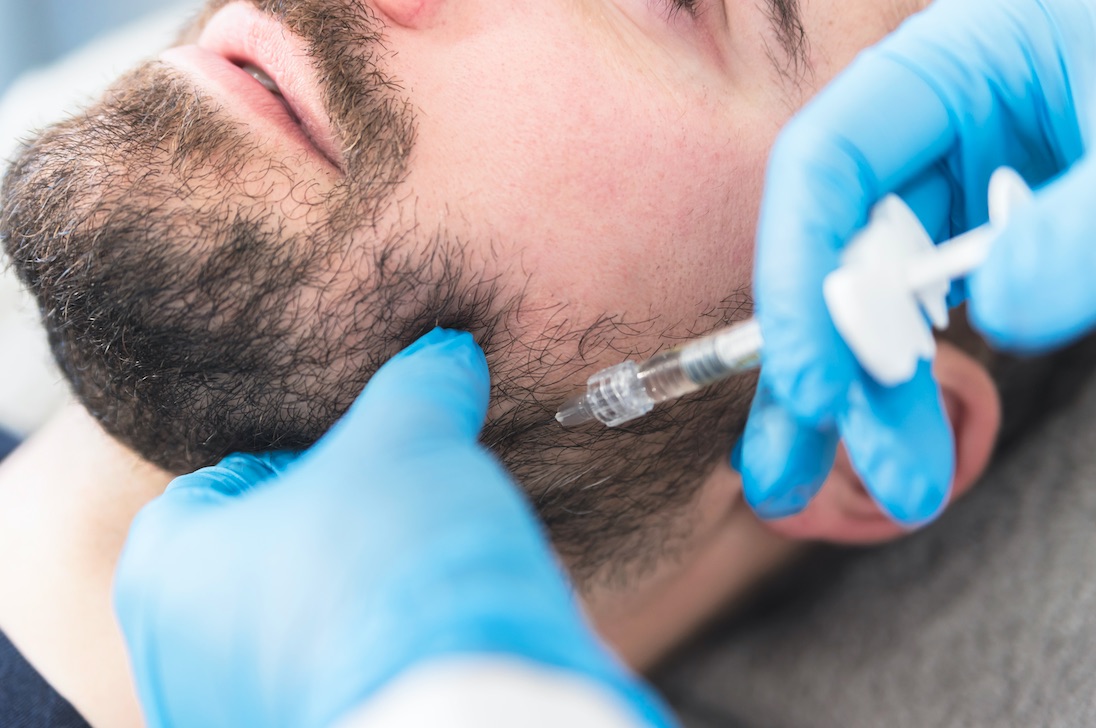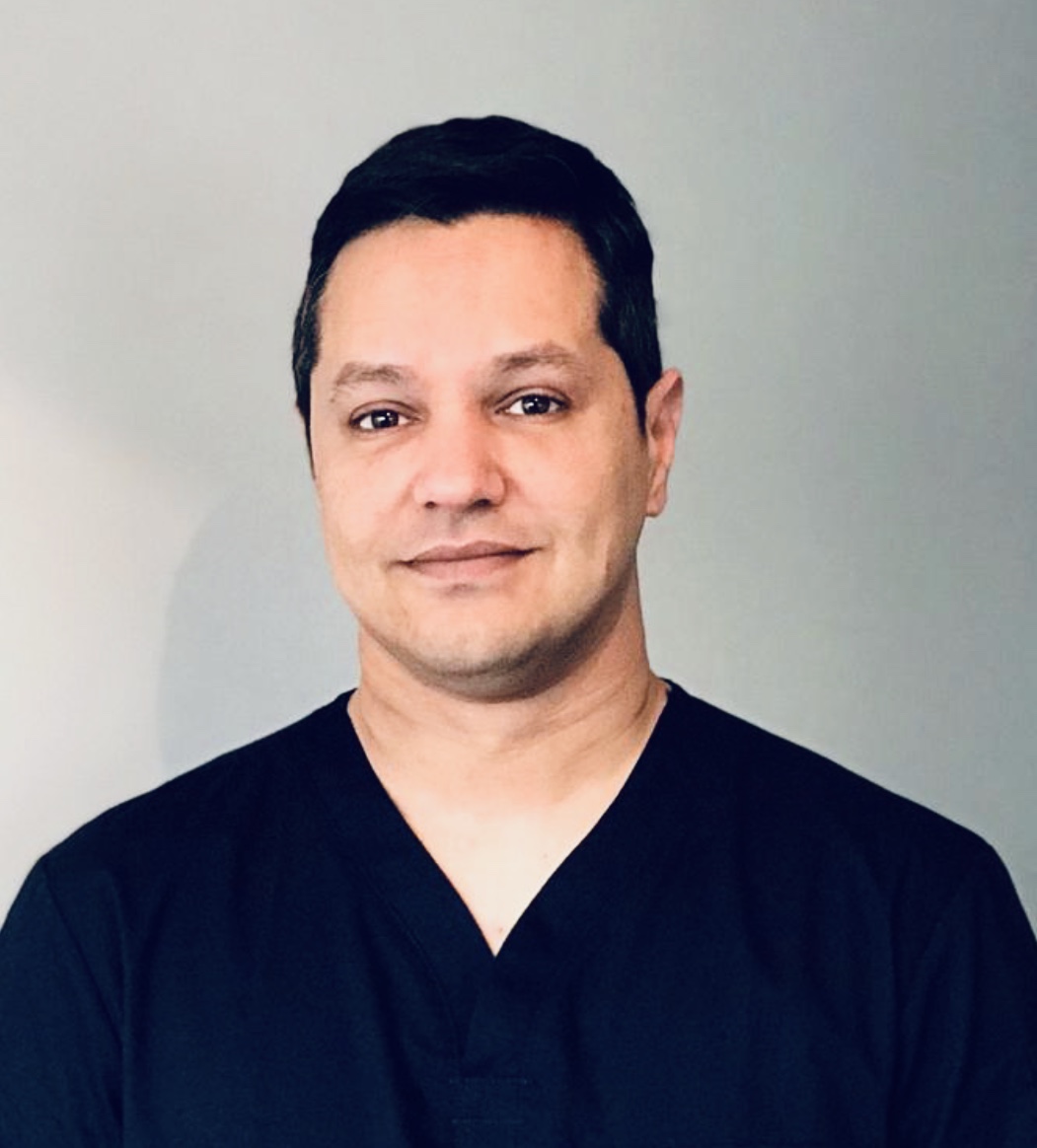AM Upskills: Augmenting the chin and jawline with dermal filler

Chin and jawline augmentation with dermal filler has gained popularity in the last few years, with an increasing number of celebrities undergoing injectable procedures to complement or enhance their facial profiles. Social media posts linked to these procedures have added to the popularity of chin and jawline enhancement.
Hyaluronic acid-based dermal filler with the correct rheology (viscoelastic) properties allow advanced practitioners to achieve this goal. Despite HA fillers being semi-permanent, it is accepted as an excellent alternative to surgical intervention at a much-reduced cost.
Within the last year, I have welcomed a small number of transgender patients into consultation to discuss the various treatment options available for jawline treatment by either creating the widely desired tapered lower face or V-shaped look (feminisation), or by enhancing the chin and jawline to create a more squared-off appearance (masculinisation).
In order to understand the treatment approach a little deeper, we should consider the “five Ps”: practitioner, patient, planning, product, and procedure.
PRACTITIONER
Chin and jawline augmentation is an advanced-level set of procedures which need to be performed by an experienced injector who has gained knowledge and skill in the correct procedures as well as mastery in using both needle and cannula.
Most advanced practitioners will have developed their own unique combinations of filler placement; I almost always use both needle and cannula when treating chin and jawline.
Knowledge of facial anatomy and danger zones are of paramount importance. Around the chin and jawline, care should be taken in respect to the inferior alveolar nerve and branches, dentition and gingiva, superficial fat pads, submandibular and parotid salivary glands as well as the facial artery and veins.
PATIENT
The approach should always centre on the needs of the patient and what is achievable for the practitioner. I often discourage the use of social media posts as a therapeutic endpoint and prefer to focus the patient’s attention on what can be achieved with their own facial structures and anatomical arrangement.
While most patients are suitable for chin and jawline augmentation, additional factors to consider when examining, which I often encounter are perhaps a male patient requesting enhancing of his mandibular angle, or a female patient requiring enhancement to allow for a more tapered or V-shaped face. The cultural background of the patient will add a further layer to the assessment: for example, oriental-Asian women may opt for a more anteriorly projected and elongated chin which can alter the profile to achieve a more tapered or V-shaped face with no augmentation to the mandibular angle.
PLANNING
I find the rule of thirds to be an excellent planning tool which allows for assessment of the upper third of the face, which may benefit from filler into the temporal region (+/- lateral brow) using Stylage M (cannula technique) or Stylage XL (direct periosteal injection). The middle third of the face utilises the rigid zygomatic arch to allow for restoration of volume to the cheeks – both anterior and lateral – which serves to lift or anchor the soft tissues, structures of the lower cheek and perioral area of the lower face.
In order to maintain the anatomical differences between male and female faces, it should be considered that in females the ratio of lateral to anterior cheek is 2:1, whereas in males it is 1:1; so as to replace midface volume and assist in improvement of the jowls, reducing the depth of the nasolabial folds and supporting the tear trough area.
The planning phase of treatment may often involve a multiple treatment session strategy where other treatments may be used beforehand, such as lipodissolving of the submental fat pad, or the insertion of PDO threads for collagen stimulation, or injection of toxin into the masseters – generally done prior to the placement of the dermal filler. I often ask about weight loss, as this has an important bearing in the planning phase. Should a patient gain weight after treatment it may give a more rounded appearance to the chin and jawline, thereby giving an untoward outcome.
PRODUCT
The concentration of HA, rheology and most importantly, G-prime are the three crucial factors in considering filler choice for the chin and jawline. Stylage XL is one of the two volumisers in the Stylage volumiser portfolio and both are indicated for facial volume restoration, with Stylage XXL having a further indication for facial volume creation.
Both Stylage XL and XXL exhibit Vivacy’s IPN-Like technology, which significantly adds to the longevity of the product. The addition of the antioxidant mannitol to both products serve to prevent early inflammatory breakdown of the product after injection and adds to the overall longevity after injection.
Stylage XL has a high G-prime with 26mg/g of HA (IPN-Like technology). The product injects exceptionally well with the new Bi-soft syringe through needle and cannula, and has high malleability, especially when injected around the pogonion (direct periosteal injection method). Stylage XL is also my preferred choice for placement of filler into the prejowl sulcus (cannula method) and provides good volume restoration in the angle of the mandible.
Stylage XXL has the highest G-prime in the entire range, and although it contains 21mg/g of HA (IPN-Like technology) it is the most viscous and elastic of the two volumisers. I often use Stylage XXL for chin and jawline augmentation in patients where volume creation is required and projection of the mental protuberance and angle of the mandible is desired.
The rheology of the chosen product is very important, as if a filler with less viscoelastic property is chosen, it will lead to premature breakdown of the product, loss of projection and volume and will integrate into the tissues to provide a rounder appearance as opposed to a defined one. The longevity of the volumisers in the Stylage range provide for around 12-18 months duration, at which point further augmentation may be required to maintain the results.
PROCEDURE
Topical or local anaesthesia is always used to ensure optimum comfort for the patient and to prevent pain on injection. The Bi-soft syringe allows enough room within the length of the syringe to comfortably aspirate, thereby adding to the safety for the patient and injector.
The plunger ergonomically enhances the surface area so less force is required to extrude this viscous product out. The ease of injection is not affected by the use of a cannula. This allows for a smoother, more refined injection and optimises product placement.
Dr Zunaid Alli is an aesthetic medicine practitioner. His medical background is in emergency medicine and trauma, general medicine and medical oncology. He is a key opinion leader for Vivacy UK and hastrained locally and in Europe for the Stylage portfolio. He is also lead medical trainer for Glow Aesthetic Training and trains practitioners in injectables, aesthetic skincare and chemical skin resurfacing.
Brush up on your microneedling skills with another of our AM Upskills articles.




